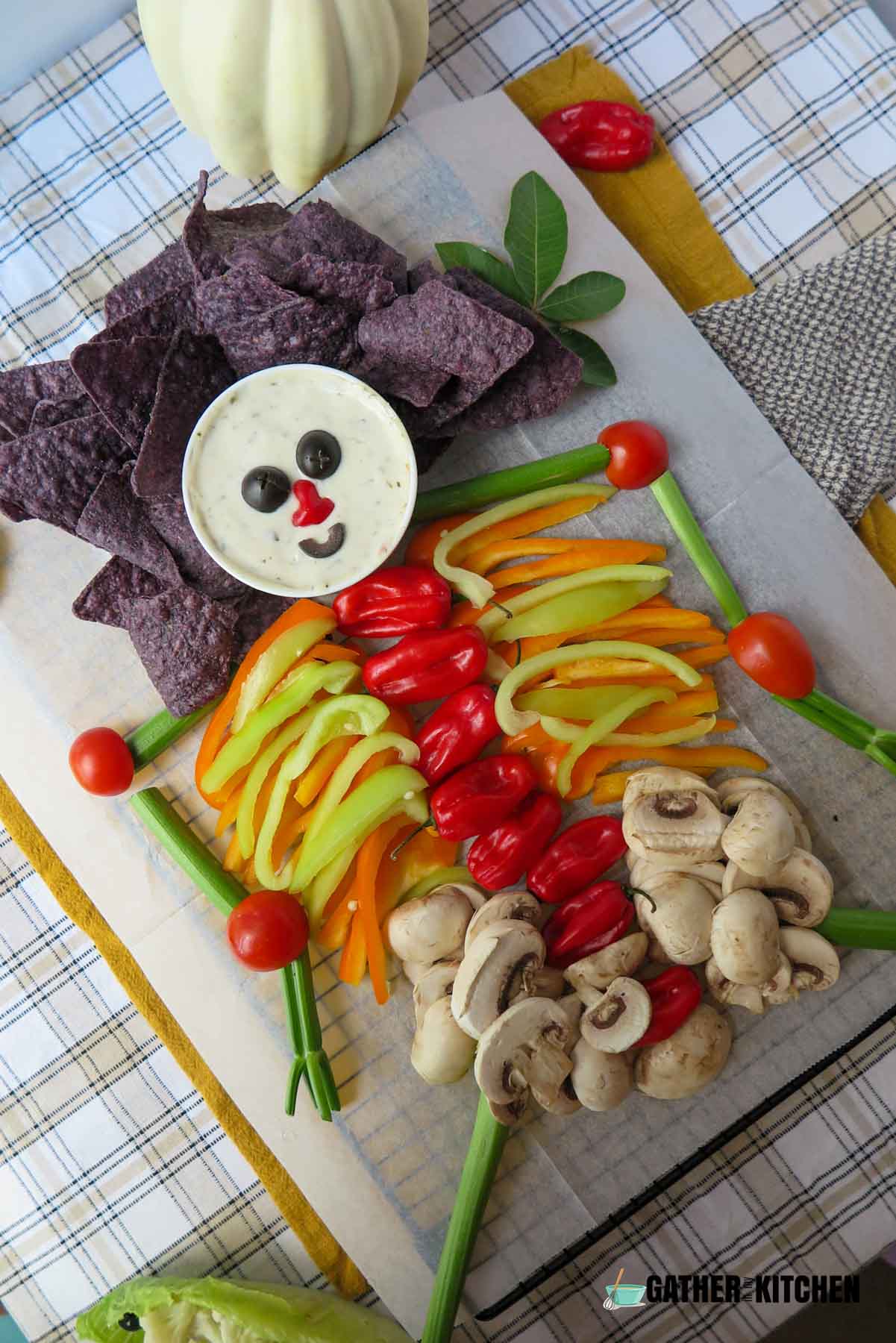Understanding the Crudité Skeleton
A crudité skeleton is a creative and healthy appetizer where raw vegetables (crudités) are meticulously arranged on a platter to resemble a human skeleton. This presentation is particularly popular for themed parties, such as Halloween, offering a visually appealing and nutritious alternative to standard party fare.
Key Components: Vegetable Selection
Choosing the right vegetables is crucial for effectively constructing the anatomical features of the skeleton. Consider the following options:
- Skull: A small, hollowed-out bell pepper (often white or pale green), a bowl of white dip (like ranch or cauliflower hummus) strategically placed, or a cluster of cauliflower florets. Olives or peppercorns can serve as eyes.
- Spine: A row of cucumber slices, a long carrot, celery stalk, or a line of snap peas.
- Rib Cage: Curved bell pepper strips (red, yellow, orange for contrast), celery sticks, or carrot sticks.
- Pelvis: Typically formed using the top half of a bell pepper, or a small bowl for dip around which other "bones" are arranged.
- Limbs (Arms & Legs): Longer, straight vegetables such as carrot sticks, cucumber spears, celery sticks, or green beans.
- Hands & Feet: Small broccoli or cauliflower florets, fanned baby carrots, mushroom slices, or small bell pepper strips.
- Joints: Cherry tomatoes or olive halves can be used to demarcate elbows, knees, and shoulders.
Assembly and Presentation Tips
Creating a convincing crudité skeleton requires some planning and attention to detail:

- Platter Choice: Select a large, flat serving platter or board that provides ample space for the entire skeleton. Dark platters can make colorful vegetables pop.
- Layout First: Lightly sketch or visualize the skeleton's outline on the platter before placing vegetables. Start with the torso (spine and ribs) to establish the core structure.
- Cutting Techniques: Cut vegetables uniformly for a cleaner look. Ensure pieces are bite-sized and easy to pick up.
- Secure if Necessary: For more complex or upright elements, a small amount of thick dip (like hummus) can act as an "adhesive" at the base of vegetables. Toothpicks should be avoided for safety, but if used, guests must be informed.
- Dip Integration: Position dip bowls to seamlessly integrate into the design (e.g., as the skull or pelvis) or place them conveniently alongside the skeleton. Offer 2-3 dip varieties for broader appeal.
- Freshness is Key: Assemble the crudité skeleton as close to serving time as possible to maintain vegetable crispness and color. If prepping ahead, store cut vegetables in airtight containers, possibly with a damp paper towel.
- Garnish Sparingly: A light sprinkle of fresh herbs like parsley or dill around the base can add a touch of color without overwhelming the skeletal design.
Serving Considerations
Maintain Coolness: If the platter will be out for an extended period, consider placing it on a bed of ice or using a chilled serving tray to keep vegetables fresh. Replenish vegetables and dips as needed, especially during longer events.












